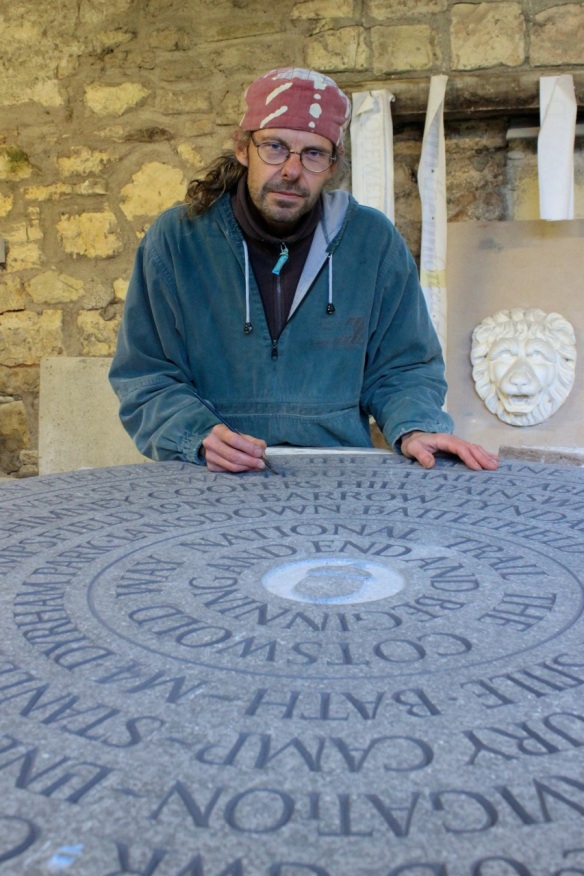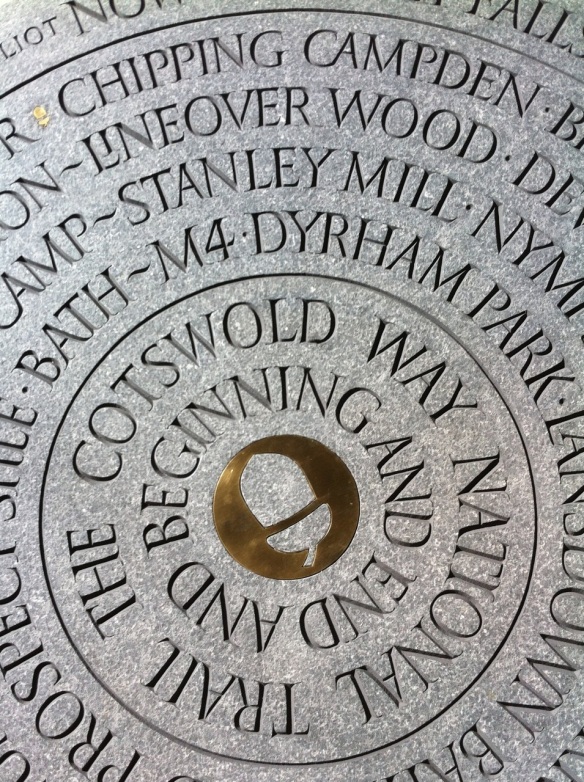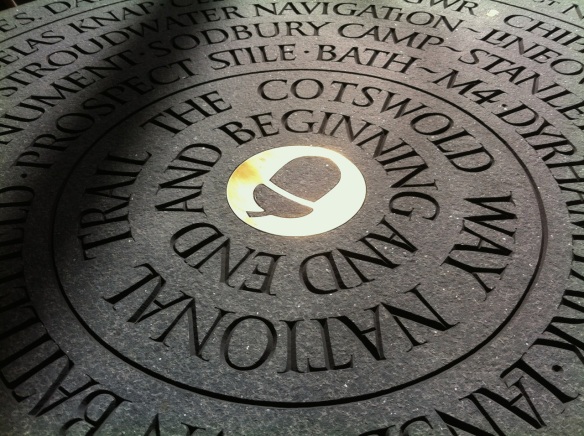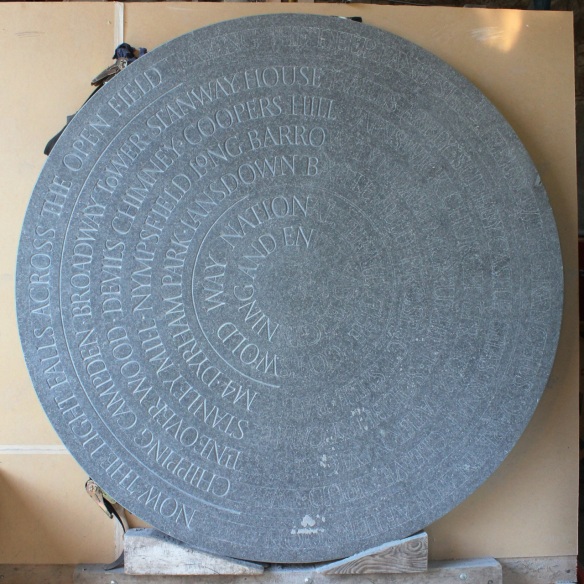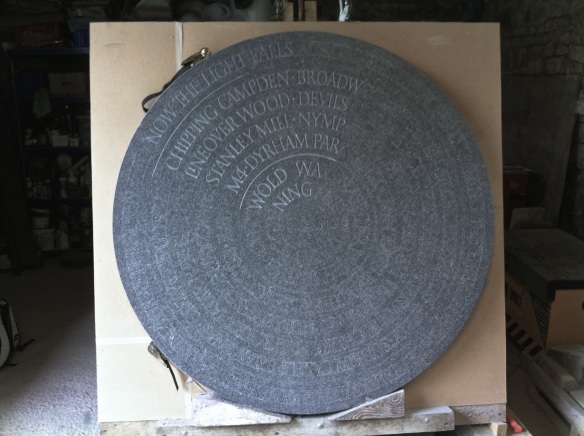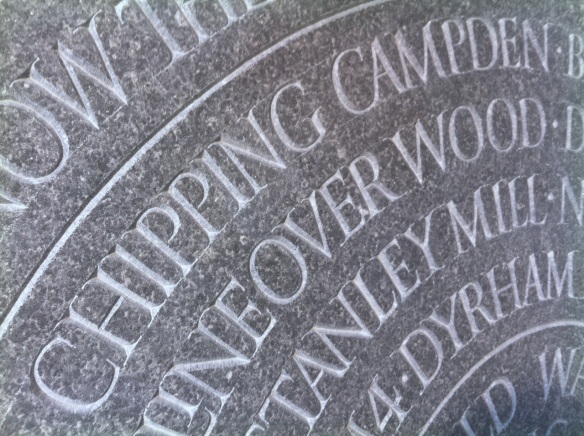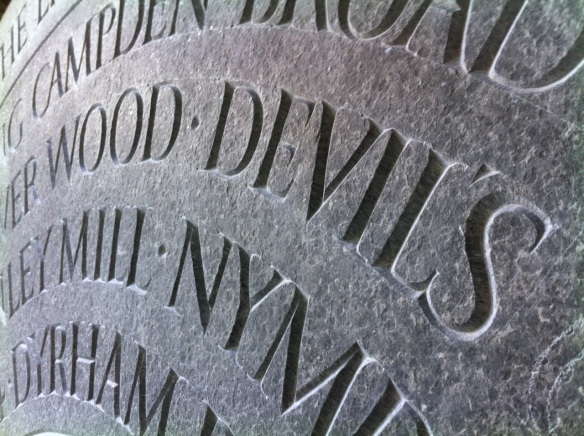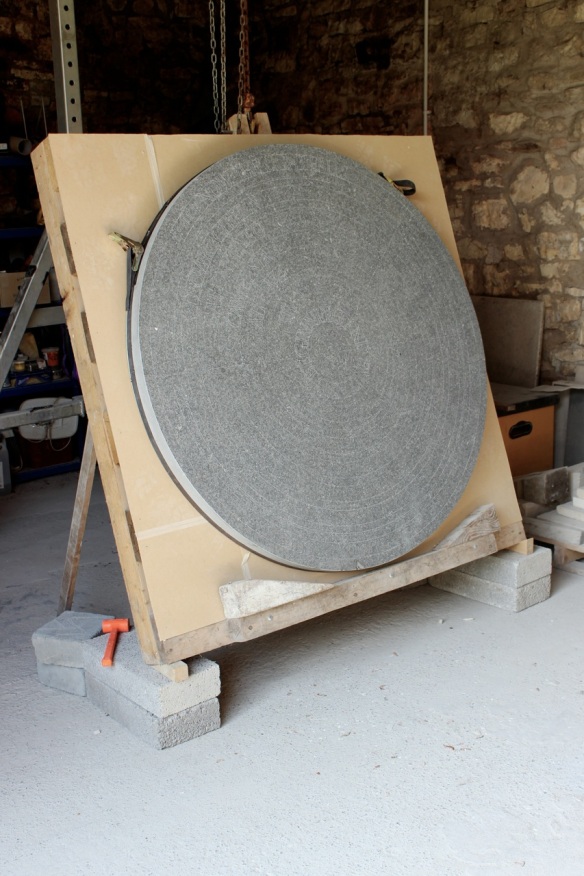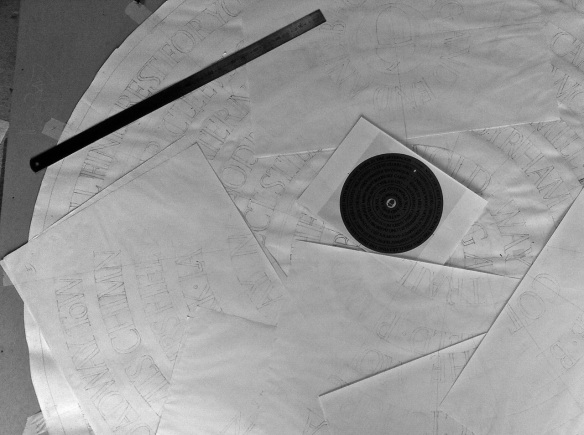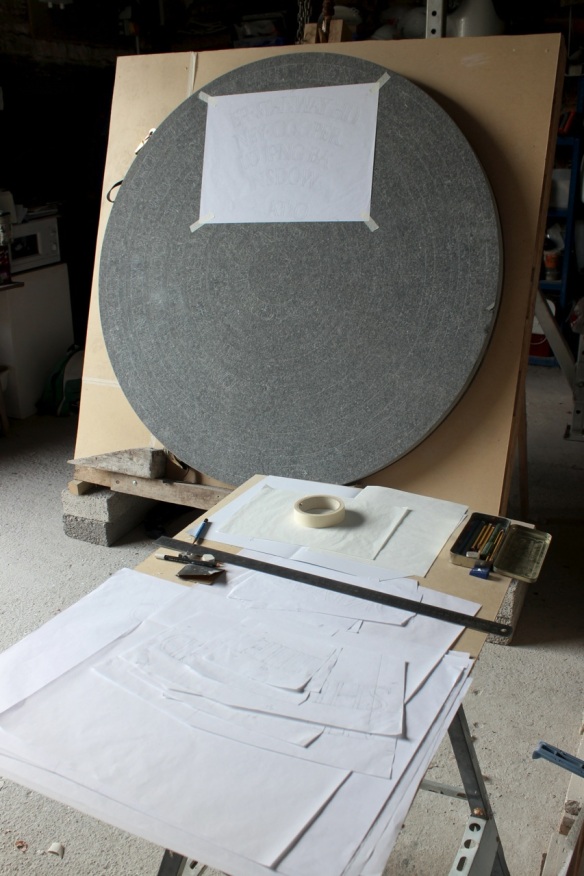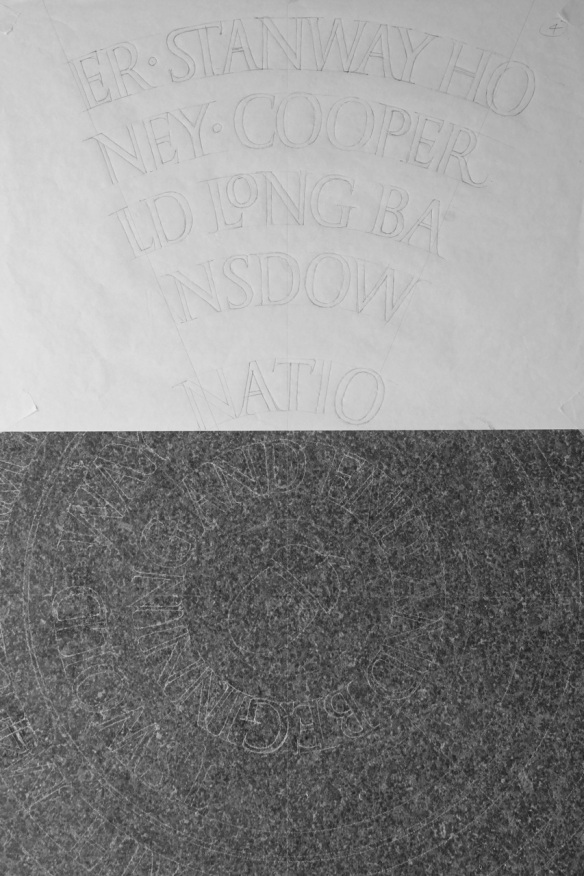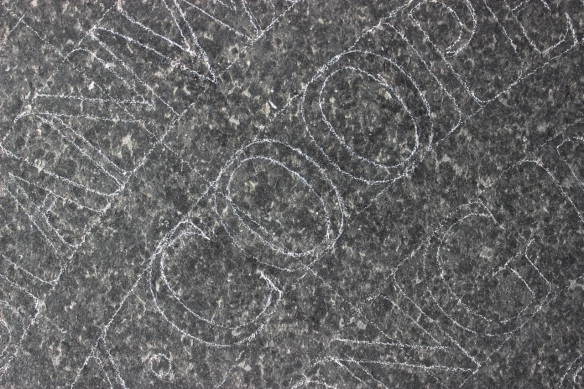This week’s progress report has seen me painting the letters, and inlaying the brass acorns. Why paint those beautiful letters I hear you ask?
Well, when the sunlight falls across v inscribed letters they stand out really nicely, but this is England and on a dull day in November the contrast can be a little too low to reveal the letters at their best. So I have painted them the same colour as the stone, but a tone darker than the stone when it is dry and a tone lighter than the stone when it’s wet, adding just enough contrast to help with legibility when the light is rubbish. The paint is made by the German manufacturer Keim, and it is micro-porous, very hard wearing and has a sympathetic mat finish. This sensitive choice of colour should weather sympathetically as the marker ages too. A big thank you to Theresa Llewellyn who helped me paint 3 coats into 409 letters, thus keeping me sane!
The Marker is finished and ready for installation on Thursday. I don’t feel like I can fully relax until it is safely installed. I am looking forward to seeing it in position in its wonderful site in front of the historic Market Hall in Chipping Campden. It really is a lovely intimate space..

